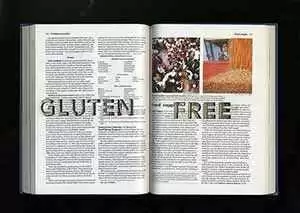Today Marks the Finalization of the Food and Drug Administration's (FDA) Gluten-Free Labeling Regulation
Today marks the finalization of the Food and Drug Administration's (FDA) Gluten-Free Labeling Regulation, which will assure consumers that all products labeled gluten-free in The United States must follow standardized governmental guidelines. Nearly 10 years ago, the Food Allergen Labeling and Consumer Protection Act (FALCPA) required the labeling of the top eight allergens in food. A second and separate part of FALCPA required the FDA to define regulations for labeling products as gluten-free. After exhaustive investigation, two public comment periods, and extensive meetings with the Gluten Intolerance Group as well as other interest groups, this ruling provides standards for labeling products designed to protect the health of persons with gluten-related disorders who require a medically prescribed gluten-free diet for their health.
Nearly 10 years ago, the Food Allergen Labeling and Consumer Protection Act (FALCPA) required the labeling of the top eight allergens in food. A second and separate part of FALCPA required the FDA to define regulations for labeling products as gluten-free. After exhaustive investigation, two public comment periods, and extensive meetings with the Gluten Intolerance Group as well as other interest groups, this ruling provides standards for labeling products designed to protect the health of persons with gluten-related disorders who require a medically prescribed gluten-free diet for their health.
The ruling sets the safety threshold for labeling products gluten-free at 20 ppm or less, and defines the use of ingredients and labeling terms. Manufacturers are being encouraged to comply with the regulation as soon as possible. The FDA standard is consistent with the Codex Alimentarius labeling guidelines set by the World Health Organization. The United States now joins the ranks of several major countries around the world that have adopted similar standards, including the European Union and Canada. Since 2011, The United States' gluten-free food industry has doubled annually in size and is projected to reach $8.5 billion by 2015, according to the Nutrition Business Journal. The Gluten-Free Labeling Regulation allows for numerous new products to be safely available to consumers in this ever-expanding marketplace.
"This ruling provides assurance to consumers that products labeled gluten-free are truly safe for persons requiring a gluten-free diet," states Cynthia Kupper, RD, Executive Director of the Gluten Intolerance Group of North America.
The Gluten Intolerance Group of North America applauds the Food and Drug Administration's (FDA) completion of the Gluten-Free Labeling Regulation and is encouraged to see this triumph in standardization for the gluten-free community.
About the Gluten Intolerance Group of North America (GIG)
GIG has been serving the needs of the gluten-free consumer for 39 years through its social and food industry programs, which provide education and support for living healthy gluten-free lifestyles. These programs include the Gluten-Free Certification Organization, Gluten-Free Food Service Certification, as well as the international Chef to Plate Gluten-Free Awareness Program, which is conducted with restaurants in several countries. GIG also offers many educational programs and materials, support groups, and summer camps. To learn more about the Gluten Intolerance Group visit Open Original Shared Link.
Contact: Cynthia Kupper, Executive Director (253-833-6655)



12 Comments
Recommended Comments
Create an account or sign in to comment
You need to be a member in order to leave a comment
Create an account
Sign up for a new account in our community. It's easy!
Register a new accountSign in
Already have an account? Sign in here.
Sign In Now